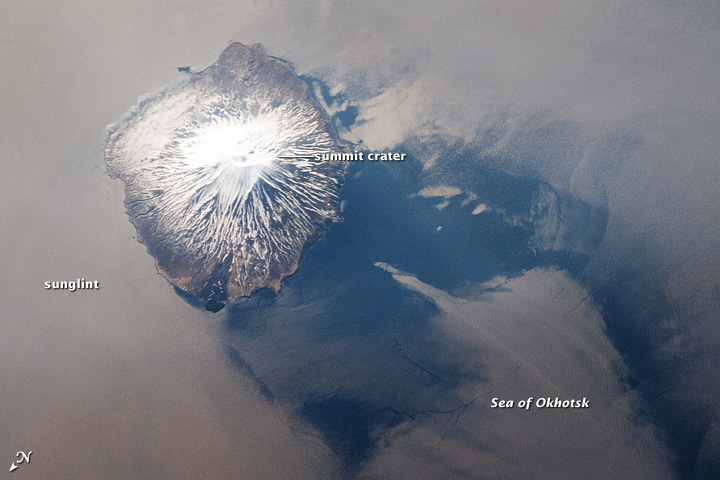An Astronaut's View of a Volcano


Behold Alaid Volcano, the northernmost and highest volcano in the Kuril Island chain, which stretches from Russia's Kamchatka Peninsula to Japan.
Part of Russian territory, Alaid has the textbook cone-shape summit of a composite volcano and tops out at 7,674 feet (2,339 meters). A composite volcano, or stratovolcano, is made of many layers of hardened lava and ash spewed out during periodic eruptions.
Astronauts from the Expedition 31 crew aboard the International Space Station snapped this photo of the volcano on May 18 using a Nikon D2Xs digital camera.
The volcano rises 9,843 feet (3,000 m) from the floor of the Sea of Okhotsk. Volcanoes in the Kurils and similar island arcs in the Pacific "Ring of Fire," are fed by magma generated along the boundary between two tectonic plates, where one plate is being driven beneath the other in a process known as subduction.
Alaid Volcano has been historically active, and most recently blew its top in 1996. The volcano is also referred to as Atlasov Island and is uninhabited.
Much of the sea surface surrounding the volcano has a silver-gray appearance due to sun-glint, where light reflects off the sea surface and is scattered directly towards the observer on the ISS.
Follow OurAmazingPlanet for the latest in Earth science and exploration news on Twitter @OAPlanet. We're also on Facebook and Google+.
Get the world’s most fascinating discoveries delivered straight to your inbox.



